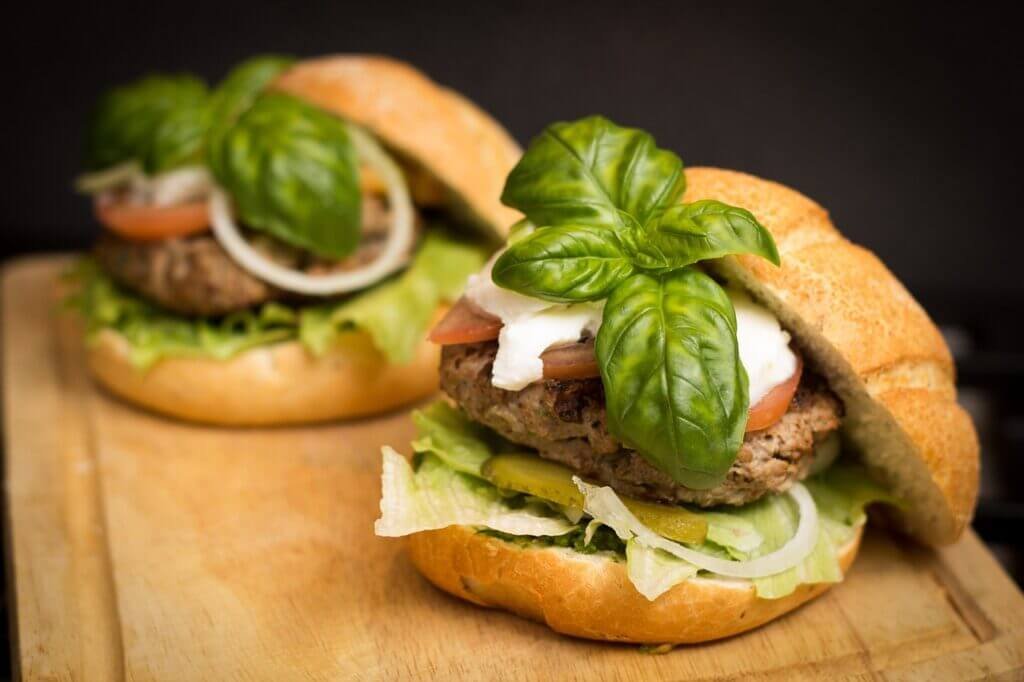Imagine this scenario: you’re hosting a dinner party and you’ve invited a group of friends, each with different dietary restrictions. Some are vegan, others are gluten-free or lactose intolerant. You want to create a dish that everyone can enjoy, one that satisfies their comfort food cravings while still meeting their dietary needs. But how can you possibly achieve such a feat? In this article, we’ll explore the answer to that very question. Discover simple yet delicious ways to create a comfort food dish that caters to multiple dietary restrictions. Get ready to impress your friends with a meal that leaves no taste bud unsatisfied!

Choosing a Comfort Food Dish
When it comes to choosing a comfort food dish, it’s important to take into consideration any dietary restrictions that you or your loved ones may have. By identifying these restrictions and considering popular comfort food dishes, you’ll be able to find a dish that everyone can enjoy.
Identify common dietary restrictions
The first step in choosing a comfort food dish that caters to multiple dietary restrictions is to identify the common dietary restrictions among your group. Some of the most common restrictions include vegan/vegetarian, gluten-free, dairy-free, nut-free, soy-free, and low-carb.
Consider popular comfort food dishes
Once you’ve identified the dietary restrictions, it’s time to consider popular comfort food dishes that can be adapted to meet those restrictions. Some examples of popular comfort food dishes include mac and cheese, lasagna, burgers, pizza, and mashed potatoes. These dishes can easily be modified to accommodate various dietary restrictions.
Understanding Dietary Restrictions
In order to create a comfort food dish that caters to multiple dietary restrictions, it’s important to have a basic understanding of each restriction and its specific requirements.
Research different dietary restrictions
Take the time to research and understand the different dietary restrictions that you are catering to. This will help you make informed decisions when modifying recipes and choosing alternative ingredients. Websites, books, and online communities can provide valuable information on each dietary restriction.
Learn about specific allergens and intolerances
Within each dietary restriction, it’s important to be aware of specific allergens and intolerances. For example, within a gluten-free diet, individuals may also need to avoid ingredients such as wheat, barley, and rye. Being knowledgeable about these specific allergens and intolerances will help you avoid any potential health risks.
Vegan/Vegetarian Options
For those following a vegan or vegetarian diet, there are numerous plant-based substitutes and creative cooking techniques that can be used to create delicious comfort food dishes.
Explore plant-based substitutes
When it comes to vegan and vegetarian options, there is a wide array of plant-based substitutes available. These can include tofu, tempeh, seitan, and plant-based protein powders. These substitutes can be used in dishes such as burgers, stews, and stir-fries to create a satisfying and flavorful meal.
Creative cooking techniques for meat alternatives
In addition to using plant-based substitutes, there are also many creative cooking techniques that can be used to mimic the texture and flavor of meat. For example, marinating and grilling portobello mushrooms can create a savory and meaty burger alternative. Additionally, using jackfruit as a pulled pork substitute can provide a similar taste and texture.
Gluten-Free Adaptations
For those following a gluten-free diet, there are various gluten-free grains and flours that can be used as substitutes in comfort food dishes.
Discover gluten-free grains and flours
There are numerous gluten-free grains and flours available that can be used as alternatives to traditional wheat flour. Some popular options include rice flour, almond flour, coconut flour, and quinoa. These gluten-free grains and flours can be used in recipes such as pancakes, bread, and cookies to create delicious, gluten-free versions of classic comfort foods.
Adapting traditional recipes to be gluten-free
Another option for those following a gluten-free diet is to adapt traditional recipes to be gluten-free. This can be done by substituting ingredients such as wheat flour with gluten-free alternatives. By making these adaptations, you can enjoy the flavors and textures of your favorite comfort food dishes without the worry of gluten.

Dairy-Free Considerations
For individuals who are lactose intolerant or follow a dairy-free diet, it’s important to find suitable alternatives for dairy products in comfort food dishes.
Finding dairy-free alternatives
There are many dairy-free alternatives available for those who cannot consume dairy products. These alternatives include plant-based milks such as almond, soy, and oat milk, as well as vegan cheeses and yogurt. These dairy-free alternatives can be used in recipes such as creamy pasta dishes, desserts, and sauces to achieve the same creamy texture and flavor as traditional dairy products.
Making creamy dishes without dairy
In addition to using dairy-free alternatives, there are also various techniques that can be used to create creamy dishes without dairy. For example, using cashews, blended with water, can create a creamy and rich sauce for pasta or soups. Additionally, avocado can be mashed and used as a dairy-free substitute for cream in desserts such as chocolate mousse.
Nut-Free Alternatives
For individuals with nut allergies, it’s important to identify suitable nut-free substitutes when creating comfort food dishes.
Identify nut-free substitutes
There are many nut-free substitutes available that can be used in place of nuts in comfort food recipes. Some examples include sunflower seeds, pumpkin seeds, coconut flakes, and toasted oats. These nut-free substitutes can be used in recipes such as granola bars, cookies, and nut-free trail mixes to provide a similar crunch and flavor.
Creating nut-free versions of classic dishes
When creating nut-free versions of classic comfort food dishes, it’s important to be mindful of any hidden sources of nuts. For example, some sauces, dressings, or baked goods may use almond flour or contain chopped nuts. By being aware of these potential sources, you can easily adapt recipes to be nut-free without compromising on taste or texture.

Soy-Free Options
For individuals who have a soy allergy or choose to avoid soy-based products, there are numerous soy-free protein substitutions and recipe modifications available.
Explore soy-free protein substitutions
Soy-free protein substitutions can include ingredients such as beans, lentils, chickpeas, quinoa, and tofu alternatives (made from ingredients like chickpea flour or hemp). These protein substitutes can be used in recipes such as burgers, tacos, and stir-fries to provide a satisfying and nutritious meal without soy.
Modifying recipes without soy-based ingredients
When modifying recipes to be soy-free, it’s important to carefully read ingredient labels to avoid any hidden sources of soy. Some common soy-based ingredients to watch out for include soy sauce, soybean oil, and soy protein isolates. By carefully selecting ingredients and making simple substitutions, you can easily create soy-free versions of your favorite comfort food dishes.
Low-Carb Adaptations
For individuals following a low-carb diet, it’s important to understand the principles of low-carb diets and how to replace high-carb ingredients in comfort food dishes.
Understanding low-carb diets
Low-carb diets typically involve reducing or eliminating foods that are high in carbohydrates, such as bread, pasta, and rice. Instead, the focus is on consuming foods that are high in protein and healthy fats. By understanding this principle, you can make informed decisions when modifying recipes to be low-carb.
Replacing high-carb ingredients with low-carb alternatives
When adapting comfort food dishes to be low-carb, it’s important to identify high-carb ingredients and replace them with low-carb alternatives. For example, instead of using traditional pasta, you can use spiralized vegetables or low-carb pasta alternatives made from ingredients like almond flour or konjac root. By making these swaps, you can create satisfying and delicious low-carb versions of your favorite comfort food dishes.

Allergen-Free Choices
For individuals with multiple dietary restrictions, it’s important to identify common food allergens and prepare dishes without any allergenic ingredients.
Identify common food allergens
Common food allergens include ingredients such as peanuts, tree nuts, shellfish, fish, eggs, milk, soy, wheat, and gluten. By being aware of these allergens, you can avoid using them in your comfort food dishes and reduce the risk of allergic reactions.
Preparing dishes without allergenic ingredients
To prepare dishes without allergenic ingredients, it’s important to carefully read food labels and choose alternative ingredients that are free from allergens. By making simple substitutions and being mindful of potential allergens, you can create safe and delicious comfort food dishes that cater to multiple dietary restrictions.
Tips for Creating Customizations
To cater to individual preferences and dietary restrictions, it’s important to provide options for customizable toppings or add-ins and offer alternatives for common ingredients.
Offering customizable toppings or add-ins
One way to cater to individual preferences is by offering customizable toppings or add-ins. For example, if you’re making a pizza, you can provide a variety of toppings such as vegetables, different types of cheese (including vegan options), and meat alternatives. This allows each person to create a pizza that suits their tastes and dietary needs.
Providing alternatives for common ingredients
In addition to customizable options, it’s important to provide alternatives for common ingredients. For example, if a recipe calls for eggs, you could provide an alternative such as mashed bananas, applesauce, or flaxseed meal mixed with water. By offering alternatives, you can ensure that everyone can enjoy the comfort food dishes without compromising on their dietary restrictions.
By following these tips and being mindful of the various dietary restrictions, you can create delicious and satisfying comfort food dishes that cater to everyone’s needs. Whether it’s vegan, gluten-free, dairy-free, nut-free, soy-free, low-carb, or allergen-free, there are plenty of options and adaptations available to ensure that everyone can enjoy a comforting and delicious meal together.


